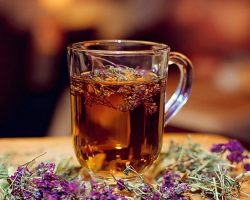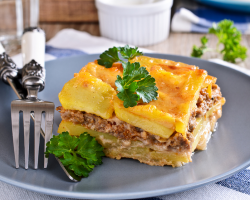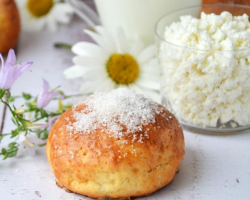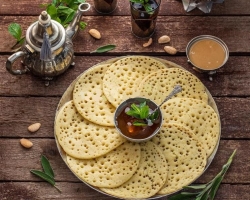The article will talk about the most common recipes for the ear drops that can be prepared at home on your own.
Content
- How to cook homemade drops from pain in your ears?
- Ear drops from onions. How to make ear drops from onions?
- Ear drops of almond oil and walnut oil
- To whom do I help drops of almond and walnut oil?
- Mint ear drops, use
- Ear drops from a decoction of chamomile. Composition of chamomile earproof drops
- Honey
- Rosehip tea for the ears. How to make drops of rosehip tea?
- Home ear recipes: tips and reviews
- Video: Otite - ear inflammation
Pain in the ears can be observed for various reasons. The most common is ear inflammation (otitis media). It can occur due to hypothermia, viral infection, or, as a consequence of a cold.
Also, pain in the ear may indicate diseases of neighboring organs (neck, brain or nasolabral system). In any case, with pain, you must consult a doctor. He will examine the ear canal and make a diagnosis. Also, the necessary treatment will be attributed.
In order for treatment to be as effective as possible, folk remedies can be used. Namely, ear drops from natural, natural components. There are several simple recipes that will help relieve pain, edema and cure inflammation.

How to cook homemade drops from pain in your ears?
Firstly, to prepare home drops from pain in the ears, you need to determine the components that have a therapeutic effect.
- Lemon juice
- Onion juice
- Laurel infusion
- Vegetable oils
- Decoction of chamomile and calendula
- Honey
- Beetroot juice
- Tincture of celandine
 All of the listed components relieve swelling and inflammation. Some, thanks to natural antiseptic properties, are able to kill pathogens and overcome the causes of inflammation. When instilled with drops by drops, several recommendations should be followed:
All of the listed components relieve swelling and inflammation. Some, thanks to natural antiseptic properties, are able to kill pathogens and overcome the causes of inflammation. When instilled with drops by drops, several recommendations should be followed:
- Drinking must be carried out clean, disinfected with a pipette. For this, it can be boiled before use
- Ear drops should be warm. They cannot be heated over the open fire. You can place a jar with drops in warm water and wait for natural heating
- Better to instill an ear, lying on the side. After instillation, the ear can be massaged so that the drops are evenly distributed along the ear canal. It is necessary to lie down for a few minutes
- After instillation, it is necessary to insert a cotton swab into the ear
- In case of pain in the ears, hypothermia is not permissible. Even, in warm, but windy weather, you need to put on a headdress or cover your ear with a cotton swab.
- Complex treatment needs to be carried out if the pain in the ears is accompanied by a cold and a runny nose
With pain in the ears, you can not self -medicate. Folk remedies are only an auxiliary way. When pain appears, be sure to consult a doctor.
Ear drops from onions. How to make ear drops from onions?
Onion is a powerful antiseptic. Cooking onions is very simple. To do this, you need to rub cleaned onions on a fine grater. Then, place the mass in gauze and squeeze onion juice. This juices are instilled with 3 drops of 3 drops before bedtime. Despite the unpleasant smell and a possible burning sensation, onion drops do perfectly with inflammation.
Also, onions can be used for a warming compress. To do this, the onion needs to be baked to a soft state. Then, wrap it in the fabric and attach it to the sore ear for several minutes. At the same time, the bulb should be as hot as possible.

Ear drops of almond oil and walnut oil
The viscous consistency of vegetable oils, perfectly fights with inflammatory processes in the ear cavity. Any vegetable oils can be used, but the most effective oil and walnut oil are considered the most effective. Before applying oil, it must be heated in a water bath. Then, drip a sore ear and apply a warming bandage. Vegetable oils can be used as a base for the manufacture of more effective ear drops.
- Clove oil. To prepare it, several hats of cloves are steamed in a water bath in a tablespoon of vegetable oil
- Garlic oil. For the manufacture of garlic drops, it is necessary to finely grate the garlic and mix it with oil. Then, heat the mixture and filter
To whom do I help drops of almond and walnut oil?
Vegetable oils are widely used for ear inflammation - otitis media. With inflammation of the middle ear, the drops are buried inward. With inflammation of the outer ear, they can be lubricated with sore areas. Vegetable oils are used as a basic element for a more complex composition of drops.
Also, vegetable oils help when extracting an insect or foreign object from the ear. Due to its viscous structure, they will not allow the insect to get deeper into the ear passage. This will simplify the process of extracting a doctor.

Mint ear drops, use
Mint ear drops are not only useful for ear diseases, but also have a pleasant, soothing aroma. Mint drops can be purchased at the pharmacy. But, if there is dried mint at home, then such drops can be prepared independently. To do this, you need to mix chopped mint leaves with alcohol, at the rate of 1 gram of leaves per 20 grams of alcohol.
The resulting mixture must be put in a dark cool place for a day. Periodically, the product needs to be mixed. After a day, the drops are filtered and poured into a dark, closing container. You can add a few drops of mint oil to the drops.
With ear pain, drops must be heated, and 3 drops twice a day are instilled in the sore ear.

Ear drops from a decoction of chamomile. Composition of chamomile earproof drops
Chamomile is considered a soft antiseptic. It does not cause irritation and allergic reactions. You can use drops from a decoction of chamomile for almost all the ear diseases. You can prepare two options for chamomile drops.
- For the first option, dried chamomile flowers and water will be required. You can purchase dried chamomile in a pharmacy. Half of packaging of flowers is poured with water and boiled. Then, the broth cooles and filtered. Such a decoction can be drunk sore ears
- The second option is alcohol tincture of chamomile flowers. For its preparation, it is necessary to pour dried flowers with alcohol. Insist the mixture for a day, then strain. Drops before use, it is necessary to heat in a water bath
Honey
Components such as honey and propolis are widely used in various recipes for traditional medicine. Honey can help with ear pains. Honey can be combined with alcohol tincture of propolis. To prepare ear drops, it is necessary to mix liquid honey with the same amount of propolis tincture.
Heat the mixture, and instill 3 drops twice a day. Also, you can a special warming compress. To do this, it is necessary to soak a cotton swab with a mixture of alcohol propolis tincture and vegetable oil (1: 3). Such a swab is laid in an inflamed ear all night.

Rosehip tea for the ears. How to make drops of rosehip tea?
To prepare drops of rosehip, it is necessary to prepare a decoction of rosehip fruits. For this, rosehip fruits are poured with water and boiled. Such tea from rosehips is useful not only for internal use, but also as ear drops. Rosehip has a calming effect and relieves pain. Such a decoction can be instilled in the ear twice a day.

Home ear recipes: tips and reviews
To understand how effective certain methods are, it is necessary to study the reviews on the network. Here is some of them:
- “I always use folk remedies as an auxiliary method. In our family, there has long been a recipe: onion juice is mixed with honey and lemon juice. Such drops can be used both for the ears and for the nose. ” Larisa, 46 years old
- “Once in childhood, my mother buried my ears with homemade drops for my ears. Now, I do not use this method. Firstly, independent treatment does not bring to good. Secondly, the ear can hurt for various reasons. Therefore, it is better to go to the hospital right away. Modern medicines will quickly cope with ear pain ", Vladimir, 37 years old
- “My son often has ears. Some kind of weak place. Each cold is accompanied by otitis media. If inflammation is just beginning, drops of onion or vegetable oil with garlic help us. Usually, complex treatment is best. We use both home -made funds and assigned by a doctor. " Alla, 27 years old
Any folk remedies must be used only after the exact diagnosis is established. With a prolonged inflammatory process, you can not make warming compresses. On the use of homemade drops, it is better to consult a doctor.
Video: Otite - ear inflammation







